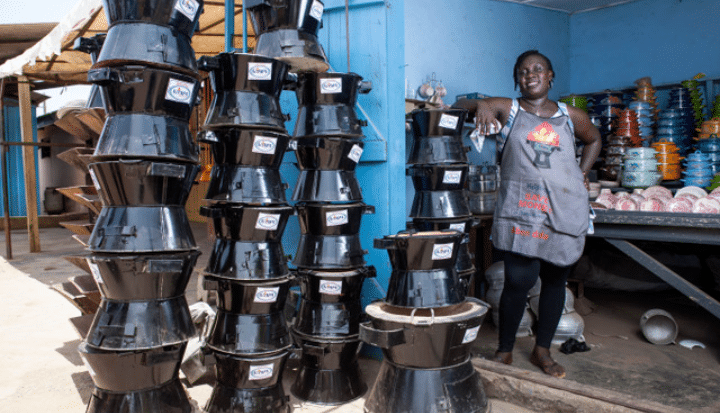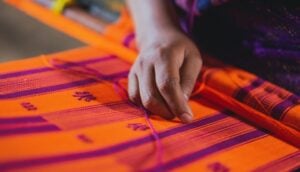In partnership with Relief International and Sustainable Development and Relief Associates (SUDRA), ClimateCare developed Gyapa – a Gold Standard project which supports health and livelihoods for families in Ghana by providing clean cookstoves. One of the largest and longest running cookstove projects in the world, more than 20,000 stoves are produced in local factories each month and 1.9 million stoves have been sold in total.
Ann Koontz, Chief Executive Officer at Relief International, shares her reflections and advice on how this project, which has reduced more than 5 million tonnes of carbon emissions, has progressed over years and how access to carbon finance has been vital to the project’s success.
Tell us about the project.
Ann: We started Gyapa to design with local cooks and artisans an improved cookstove that met the needs of Ghanaian cooks. Gyapa’s attributes, including its name, come from the feedback and advice they gave us. Relief International and Sustainable Development and Relief Associates (SUDRA) built the local supply chain for Gyapa, initially with donor support. Carbon financing through ClimateCare allowed us to scale the project by making continued investments in the growth of the supply chain and quality of the stove. Everyone in the chain makes a profit and people purchase Gyapa because they know the stove will save them money and is a quality product.
What elements of the project are you must proud of?
Ann: We are proud that Gyapa provides so many households with an affordable fuel-efficient stove and that each consumer has used their money and chosen to purchase one from their local retailer. Gyapa is produced and sold through a 100% Ghanaian production and sales network of artisans and retail outlets, and the stove can be found easily in local markets.
Which elements have had the most impact for people and the environment?
Ann: Producers and retailers in the Greater Accra and Kumasi areas have enjoyed year-on-year sales growth from Gyapa proceeds. This has meant sustainable livelihoods for hundreds of women and men that make up the Gyapa supply chain. For consumers, Gyapa starts giving them fuel savings and a better cooking experience from day one. The environmental benefits of reduced fuel use and emissions naturally follow. Recently we announced an additional 1 million tonnes of independently verified Gold Standard carbon credits, bringing the total emission reductions achieved by the project to more than 5 million over its lifetime.
How have you seen the scale of the project develop?
Ann: The project has been running for over 12 years now. It started with developing the product and Gyapa supply chain and the scale has grown each year. In the last five years it has really taken off as growth in carbon credits allowed us to invest back into the chain and set up formal production centres. This gave our Gyapa producers more stability and the ability to produce even more stoves.
How has carbon finance been essential for the successful delivery this project?
Ann: Carbon finance has allowed Relief International to keep investing in the Gyapa supply chain. These are talented, but small-scale artisans. On their own they were being squeezed in their business locations and in procuring materials. By investing with these small businesses in strategic areas – land for a production facility, sourcing of highest quality clays for the liners, bulk purchase of materials – Gyapa quality is maintained, producers make a profit, and the stove continues to be sold at an attractive price point for consumers. Carbon financing has also allowed the project to do continuous monitoring and testing, something that an individual small artisan can’t do on their own.
What did you know about carbon finance before you started this project?
Ann: I had been involved with carbon financing since the early days of joint implementation and pre-Clean Development Mechanism (CDM). I watched the voluntary markets come online and worked on livestock, methane reduction and land based-carbon work. We knew there was potential for carbon funding and were thrilled to find ClimateCare as a partner. Working with them helped us link to international funding that could scale our field work which was providing locally driven solutions.
How would you describe the advantages of carbon finance to project developers looking to start or expand their activity?
Ann: Carbon finance when used appropriately can be the key to scaling a project and creating exponential impacts for local stakeholders. But it takes hard work to properly manage a carbon project and new entrants should not view it as quick, easy revenue, but instead take a long view and invest wisely to support the carbon deal and the strategic impact for the local stakeholders.










